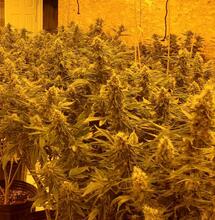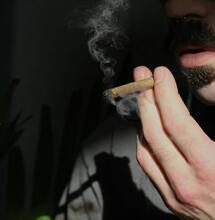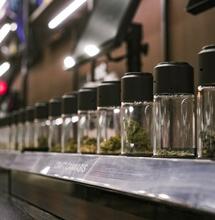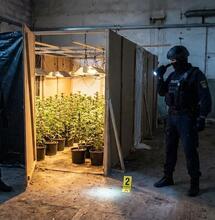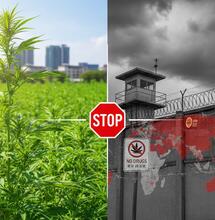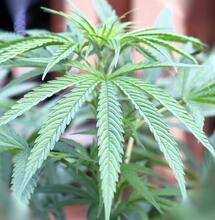How to Prepare for Harvest?
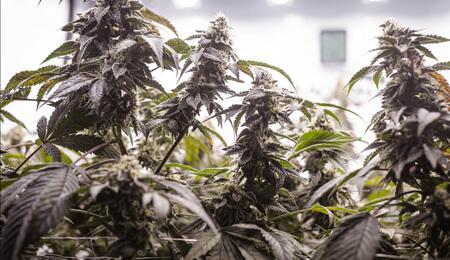
Harvest is the most anticipated moment for every cannabis grower. It’s the day when you finally get to see the outcomes of all the effort you put into growing your own medicine all those weeks and months. To make sure that everything goes well on the day of the harvest and that you make the best of it, it’s important to pre-plan some of the steps.
Come the end of summer, there’s one thing that all outdoor growers start to think about. Croptober is nearing and it’s time to start preparing for harvest. If you are growing cannabis indoors, and especially if you aim for multiple yields around the year, making pre-plans for harvest might be on your agenda all of the time.
Whichever the case, whether you are growing cannabis in the open or inside your home, it’s good to make some checks and preparations. That extra effort is what helps the crops get in the best possible shape before they are cut down, and it can significantly improve the quality of buds you get.
Some of the things to do already when cannabis plants enter their flowering period is cut back on some nutrients and adjust the light, temperature and humidity levels in the grow room. Because there’s so much to do, it’s good to make a list of all the things that you consider doing when the time nears to harvest.
Indoor growing may demand even more action, because there you control all environmental factors. If you don’t plan meticulously, you can easily get into trouble and ruin your growing project. So, it’s really important to watch plants carefully and keep them on track.
Why It’s Useful to Have a Cannabis Harvest Planner?
Sticking to a calendar or at least a plan with some rough dates around which you need to do some checks and adjustments around the plants can be beneficial throughout the entire growing process, and it can be especially meaningful for the period that precedes the harvest. A planner is where you can write out your goals and everything that needs to happen week by week, day by day.
While it’s good to specify dates for each step of the way, such as when to germinate, when to transplant the seedlings, and all the way to the estimated date for harvest, it’s not necessary that you stick to those exact dates. It’s just better when you have the rough idea of when is the time for this and that. For example, what would be the anticipated time when plants enter flowering? Then, what would be the estimated date around which you plan to change the nutrient regimen for your flowering plants? Since it’s possible for cannabis to finish with flowering sooner, or it could even finish later, there must be some flexibility and adjust the schedule.
A harvest planner is where you can put down all the practices that you want to implement regarding room regulation, nutrient feed, watering, etc. In preparation for harvest, there are also some extra activities around flushing and defoliation. You can list down all strategies and tactics you aim to do. Everything you think that will help to retain as much cannabinoids and terpenoids as possible, and determine when is the best time to proceed with cutting.
There is a lot that you can do upfront, so that by the time you get to harvest, you have less margin for error. Harvest planner is very useful in that case.

What Can You Do in Preparation for Harvest?
There are several things you can do in advance, or at least have those things in mind doing, all to ensure the harvest of your cannabis plants is successful. The pre-harvest tactics that you use as a grower will also depend on several other factors, such as the strain that’s being cultivated, what type of lights you use, how big is the grow room, and so forth.
In essence, your most attention in pre-harvest preparation should be directed toward regulating the lighting, adjusting the temperature and humidity, some nutrient management, watering, flushing, and defoliation.
Lighting
There are different approaches to regulating lighting as harvest day is nearing. For example, if you use LED lights, you can consider increasing the brightness and move the lights closer to the plants’ canopy once they are around the third week of flowering stage. Then, in the last week of flowering, it’s only logical to distance the lights and decrease the brightness in order to reduce temperature around the canopy. This would help preserve more terpenes at the end of the cycle.
Another hack is to slightly tweak the 12-12 lighting regime typically used for the flowering phase. That is, to introduce an extra hour of lighting and expose your cannabis crops to an hour of red rights at the end of each day. Red light is known to stimulate the growth of bigger buds and pack them with more THC and terpenes.
Temperature
When you grow indoors, lower temperatures during flowering are necessary to match the colder temperatures typical for the arrival of the fall season. Reducing the room temperature stimulates the growth of cannabis flowers. A slightly colder temperature will make the buds tighten up a little bit. They become a bit more denser and a bit more harder.
At the same time, it’s important to not make excess cold in the grow room. While some strains would be okay with that, many strains are not. Especially not strains that thrive in warm and sunny climates. Purpling of leaves is a classic sign that the strain has been exposed to an excess of cold. Also, too much cold can promote the kind of air moisture that attracts mold and pathogens. The general advice is to lower down the temperature gradually and avoid temperature shocks for the plants.
Humidity
Moving closer to harvest also means to start reducing humidity levels in the grow room. This will help prepare the buds for the process of drying. Less moisture is beneficial for the upkeep of the terpenoid content during flowering. Again, during this stage of the growth process, there is a greater chance of mold and pathogens, thus less moisture means more healthy plants. Same as with temperature, don’t shock the plants with rapid drops in room humidity. Do it gradually in the weeks leading to the harvest.
Nutrients
One more important adjustment that cannabis growers make nearing the time for harvest is reducing the amount of nutrients. This is not the time to add Nitrogen, the nutrient that stimulates vegetative growth. Doing so might confuse the plant. Lowering on Nitrogen around halfway the flowering period will ensure that the plant does not spend unnecessary energy on more branches or fan leaves growth but that it’s focused on resin and cannabinoid production.
Since cannabis plants are prone to start starving quickly, it's also important not to halt Nitrogen feeding all too sudden and all too early. Doing that may show with unexpected deterioration of leaves and it might escalate with fungal infection. As you cut down on Nitrogen, you can increase on Phosphorus and Potassium.
Flushing
Flushing is an essential step to make one week before harvest. Flushing is when you remove the nutrients from the container where the plant grows. If you don’t cleanse the soil, if you fail to provide at least a few days of nutrient-free soil for your cannabis plants, it will affect the taste and smell of buds in the end. At the very end of the cycle, the plant organism doesn’t need nutrients anyway.
Watering
At the end of the flowering phase, cannabis plants do not make much use of water either. A handheld moisture meter can help you determine how much moisture is in the plant and when you have the parameters you can easily decide with how much water you should proceed. If there’s a lot of moisture you only need little water.
It might be a challenge to avoid overwatering at this time. Because at the same time you also have to do some flushing. The wisdom here is to find a balance. It would help that, when you flush the soil, not to do it too heavily, as every time you flush, you add moisture which can cause stress for the plant. You can avoid hard flushing (and reduce the chances of overwatering) if you properly feed the plants throughout their growth cycle. If your nutrient input was correct, you shouldn't face this challenge when the harvest nears.
Defoliation
Whether it’s done while the plant is still in the soil or once it’s cut, defoliation or removing the extra fan leaves is a common step on harvest day. Some growers defoliate a day or two ahead of the harvest. The idea is to remove the larger leaves and to promote more air flow around the cannabis bud sites, and that will also make it easier for the buds to begin the drying. Look for fan leaves that are larger than an inch or so. Don’t remove the sugar leaves. Sugar leaves don’t produce trichomes as much as the buds, but they still have something and are worth keeping.
How to Proceed with Cutting?
Consider cutting at the base of the plant, just above the soil. The stem contains more moisture which the rest of the plant can use in order not to dry too fast. If you’ve used nettings, now is the time to remove them. If the nettings stay it can be an obstacle and knock off some of the flowers as you make the cuts.
If the plant is bushier and denser, the center will take more time to dry so consider breaking it down to speed up the drying time. Taller, narrower plants dry more evenly and therefore there is no need to break those plants down. Just hang them as they are.
Finally, before you start the harvest, ensure that everything is prepared in the room where you plan to hang the cannabis plants for drying.
Also read on Soft Secrets:
- Top Tips on Harvesting Cannabis Plants
